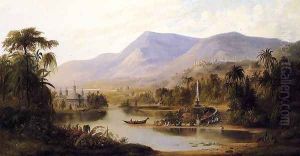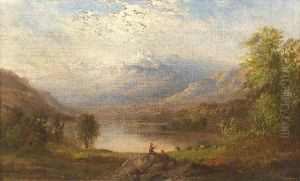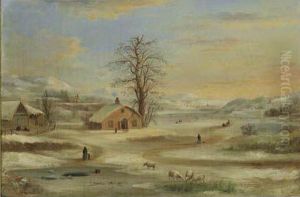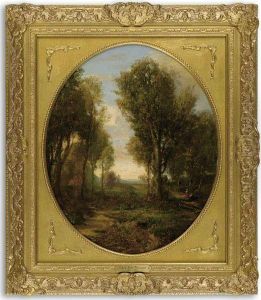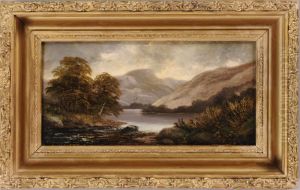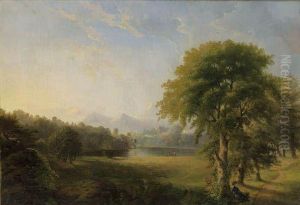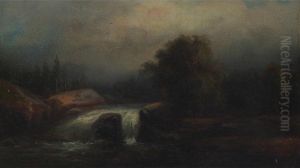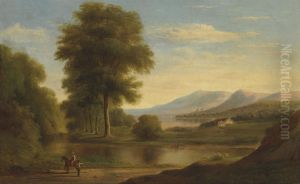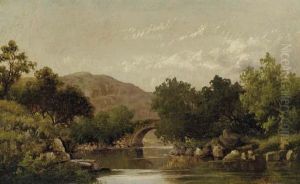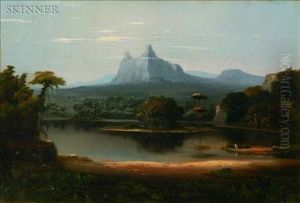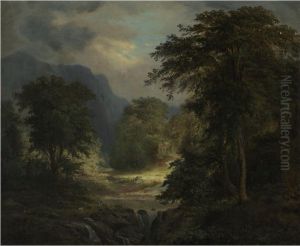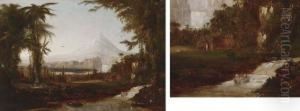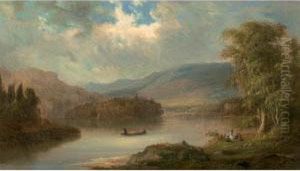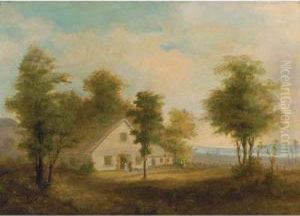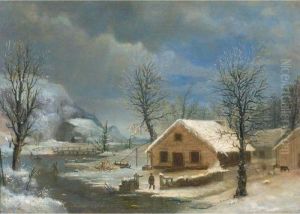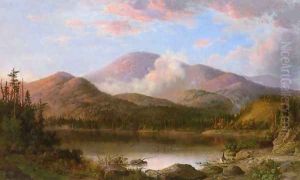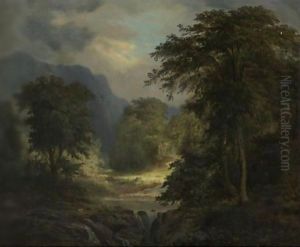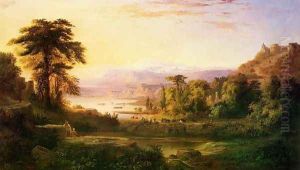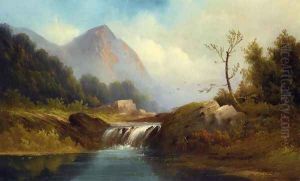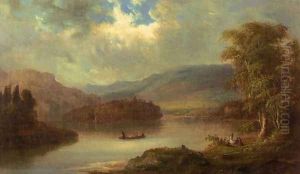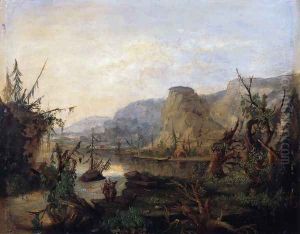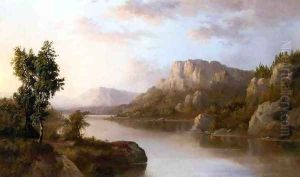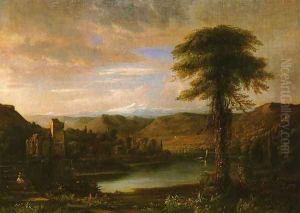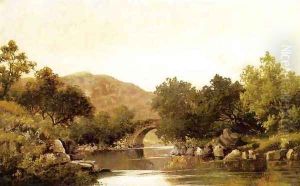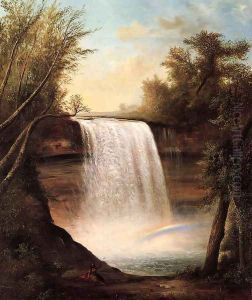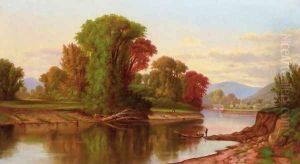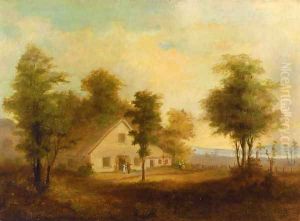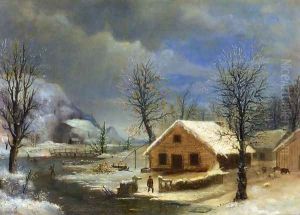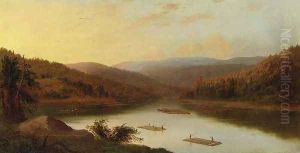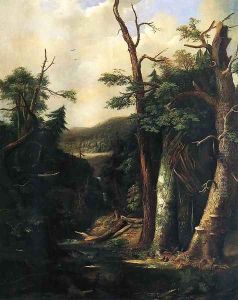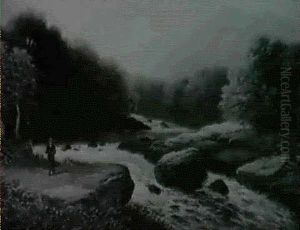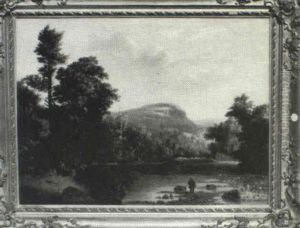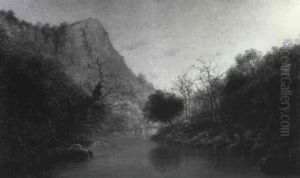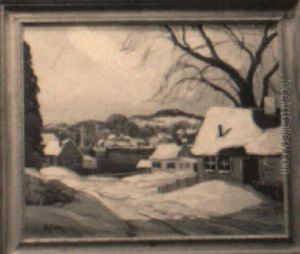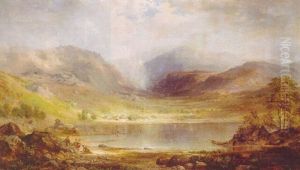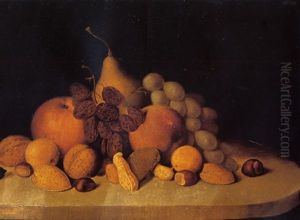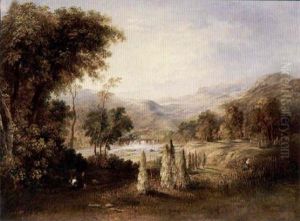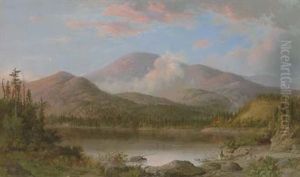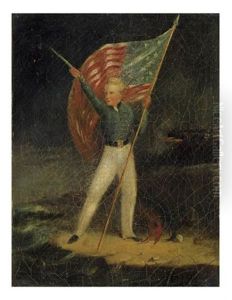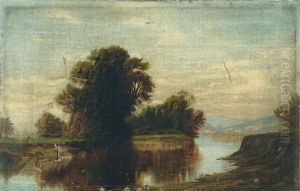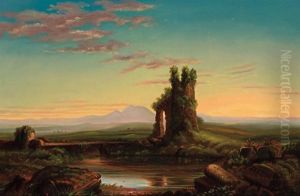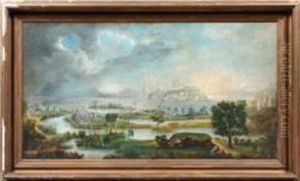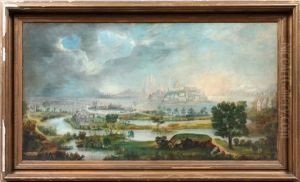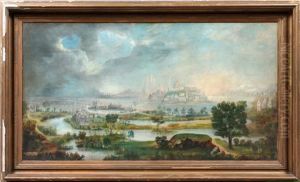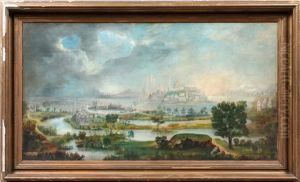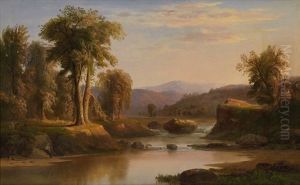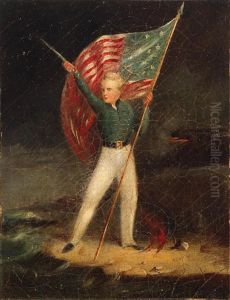Robert Scott Duncanson Paintings
Robert Seldon Duncanson was an African American painter associated with the Hudson River School, known for his landscape paintings and works that expressed his own mixed racial heritage and the struggle for abolition. Born in 1821 in Fayette, New York, to a Scottish-Canadian father and an African American mother, Duncanson navigated the complexities of race in 19th-century America to become a prominent artist of his time.
Duncanson's early life was marked by movement; his family relocated to Canada during his childhood, and later he would move to Cincinnati, Ohio, which at the time was a hub for abolitionist activity and a center for free African American culture. Cincinnati is where Duncanson's artistic talents began to flourish. He received informal training in the arts and quickly developed a reputation for his portraits and landscapes.
His landscapes echoed the work of Thomas Cole and other Hudson River School artists, showcasing the majesty of the American wilderness. Duncanson's work often contained allegorical elements and was recognized for its poetic expression and serene beauty. In 1853, Duncanson completed what is considered one of his masterpieces, 'Uncle Tom and Little Eva,' drawing from Harriet Beecher Stowe's anti-slavery novel 'Uncle Tom's Cabin.'
Duncanson gained international acclaim after a trip to Europe in the 1850s, where he was influenced by the works of European masters. His success overseas was significant, as it provided a counter-narrative to prevailing racial stereotypes and offered him opportunities that were rare for black artists in America at the time. He was particularly well-received in the United Kingdom.
The outbreak of the American Civil War in 1861 affected Duncanson deeply, as did the ongoing struggle for civil rights. Although he traveled to Canada and the United Kingdom during these years, he returned to the United States periodically and continued to create art that reflected his complex perspective on the American experience.
Robert Seldon Duncanson died in Detroit, Michigan, on December 21, 1872, after years of struggling with mental health issues. His work has been posthumously celebrated and has gained recognition for its historical significance and its role in the development of African American art. Duncanson's legacy is that of a pioneering artist who overcame the racial barriers of his time to create enduring works of beauty and social relevance.
